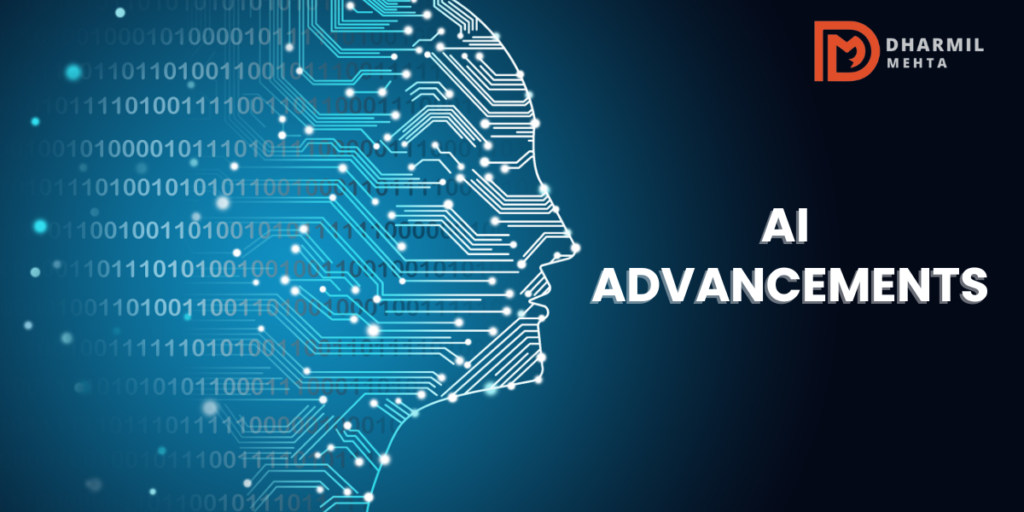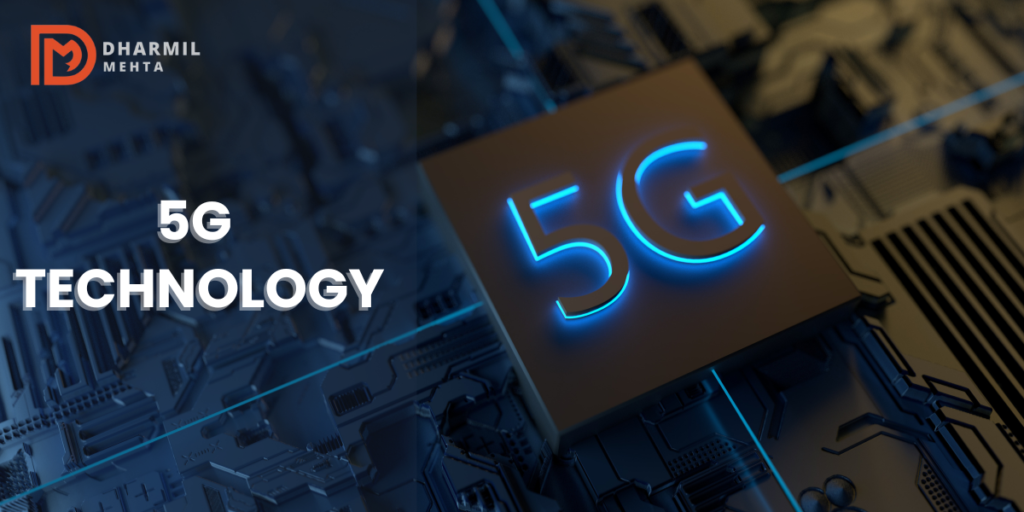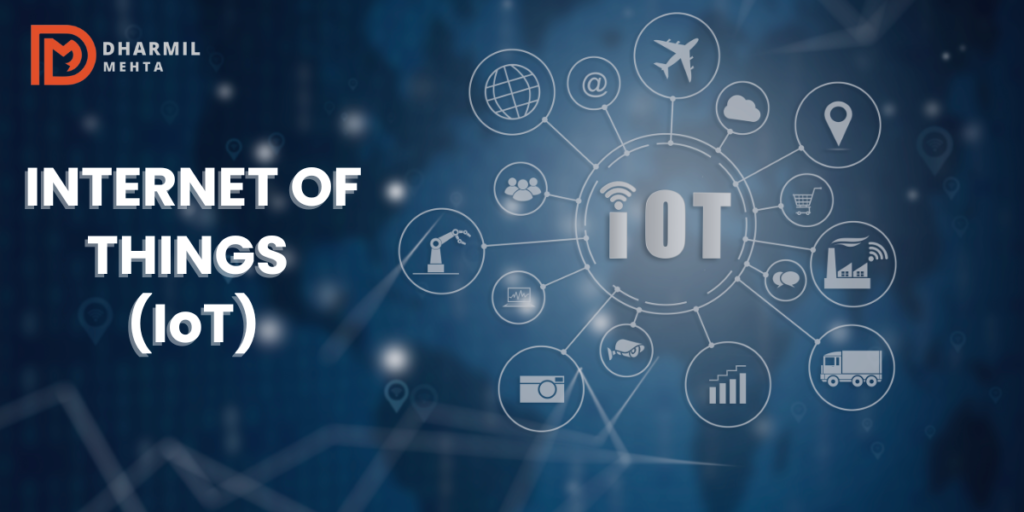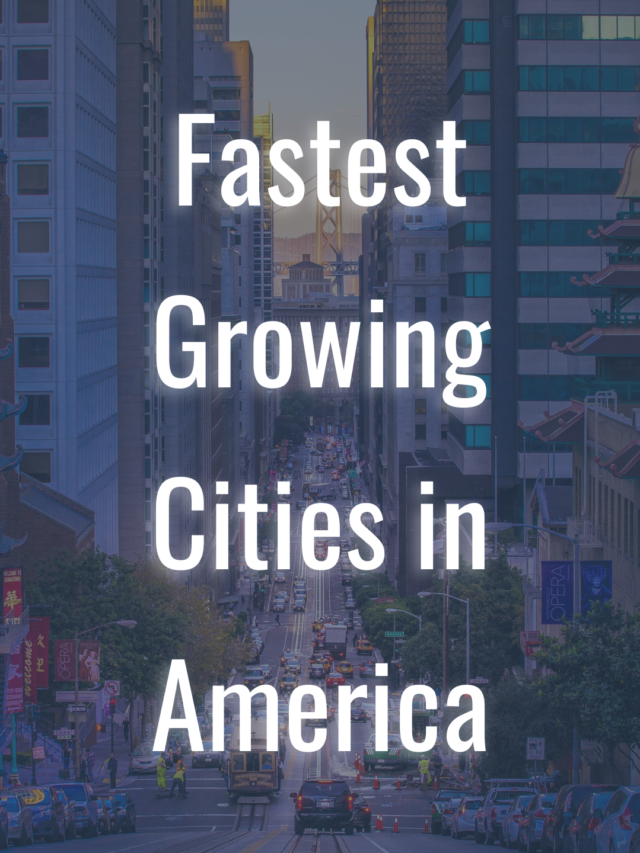In our fast-paced world, technology has become an integral part of daily life. From the moment we wake up to the time we go to bed, technological advancements shape our experiences, making tasks easier and more efficient. Not only does technology influence our personal lives, but it also drives significant changes across industries. In this blog post, we’ll explore these top 4 technology trends in 2024 —Artificial Intelligence (AI) Advancements, 5G Technology, the Internet of Things (IoT), and Blockchain and Cryptocurrency—are shaping our future.
Artificial Intelligence (AI) Advancements:

In recent years, the advancements in AI and machine learning (ML) have revolutionised systems and control engineering. In our age of big data, artificial intelligence and machine learning can analyse immense datasets in real time, enhancing efficiency and precision in data-driven decision-making processes. In control engineering, artificial intelligence algorithms can predict system behaviours and autonomously adjust controls, optimising performance for greater efficiency and reliability. These technologies are paving the way for smarter, more responsive systems that adapt and improve continually, driving unprecedented levels of innovation and productivity.
Machine learning models possess the remarkable ability to continuously refine their predictions and decisions as they process more data. This ongoing learning process enables systems to adapt dynamically to changing environments and operational conditions. As a result, these systems become more capable over time, enhancing existing technologies and paving the way for groundbreaking innovations. Examples include autonomous vehicles and smart grids, which were once thought to be unattainable but are now becoming a reality thanks to the rapid advancements in machine learning.
Applications across industries:
Artificial Intelligence (AI’s) applications span various industries:
- Healthcare: AI algorithms can analyze medical data to assist in diagnosing diseases, predicting patient outcomes, and personalizing treatment plans.
Finance: AI-powered tools help in fraud detection, algorithmic trading, and risk management.
Retail: AI improves customer experience through personalized recommendations and efficient inventory management.
Manufacturing: AI driven robots increase production efficiency and reduce human error.
Impact of Artificial Intelligence (AI) on Employment and Ethical Considerations
While AI brings lots of benefits, it also raises concerns about job displacement. Automation could replace certain types of jobs, leading to economic and social challenges. Ethical considerations around AI include issues of bias in algorithms, data privacy, and the accountability of AI systems. It is crucial for policymakers and industry leaders to address these concerns to ensure a balanced approach to AI integration.
- Advertisement -
5G Technology:

What is 5G technology?
The potential maximum speed ofit technology is 20 Gbps, compared to only 1 Gbps for 4G technology. Additionally, it promises reduced latency, which might enhance the functionality of various digital activities (such online gaming, videoconferencing, and self-driving cars) as well as business applications.
While 4G LTE and other previous generations of cellular technology concentrated on maintaining connectivity, 5G takes connectivity a step further by offering clients connected experiences via the cloud. Cloud technologies are utilized by 5G networks, which are software-driven and virtualized.
Additionally, the 5G network will make mobility easier by enabling smooth open roaming between Wi-Fi and cellular connectivity. Without the requirement for user intervention or reauthentication, mobile users can seamlessly transition between wireless networks within buildings and outdoor networks.
In underserved rural areas and in cities where demand may exceed current 4G technology’s capabilities, 5G technology should enhance connection. In order to facilitate quicker data processing, new 5G networks will also have a dense, distributed-access architecture and relocate data processing closer to the edge and the consumers.
Industries That Will Benefit Most with 5G Technology
Several industries stand to gain significantly from 5G technology:
- Telecommunications: Enhanced mobile broadband services will improve user experiences and enable new applications like augmented reality (AR) and virtual reality (VR).
- Healthcare: Telemedicine will become more effective with real-time data transmission, facilitating remote surgeries and consultations.
- Automotive: 5G is critical for the development of autonomous vehicles, providing the necessary speed and reliability for data exchange between vehicles and infrastructure.
- Entertainment: Streaming services will deliver higher-quality content with reduced buffering times, and gaming experiences will become more immersive.
With 5G, government and commercial organizations will undergo unthinkable change as it quickly moves from pilot projects to widespread deployment. The 5G revolution has already started, and this technology is meeting the ever-increasing needs of a variety of industries, including manufacturing facilities, ports, warehouses, and smart cities. With the help of technologies like IoT, edge and cloud computing, and 5G, Industry 4.0 is expected to greatly benefit from 5G. It’s time to implement 5G now.
Internet of Things (IoT):

The network of physical items, or “things,” that are implanted with sensors, software, and other technologies in order to communicate and exchange data with other devices and systems over the internet, is known as the Internet of Things (IoT). These gadgets might be anything from simple domestic items to highly advanced industrial instruments. Experts predict that the current number of linked internet of things (IoT) devices—more than 7 billion—will increase to 10 billion by 2020 and 22 billion by 2025.
How does the Internet of Things (IoT) operate?
A standard internet of things (IOT) system functions by gathering and exchanging data in real time. There are three parts to an internet of things (IoT) system:
- Intelligent gadgets
This is a gadget that has been equipped with computational power, much like a television, security camera, or workout apparatus. It gathers information from its surroundings, user inputs, and usage trends, then transfers that information to and from its Internet of Things (IOT) application via the internet. - Internet of Things (IOT) application
An Internet of Things (IOT) application is a group of programs and services that combines information from different IoT devices. It analyzes this data and makes defensible conclusions using artificial intelligence (AI) and machine learning (ML) technologies. The Internet of Things (IOT) device receives these judgments back and reacts intelligently to further inputs. - The graphical user interface:
A graphical user interface can be used to manage an internet of things (IoT) device or fleet of devices. Examples that are frequently given are websites or mobile applications that allow users to register and manage smart devices.
Future of Internet of Things (IoT) and Challenges
The future of internet of things (IoT) looks promising, with potential applications in smart cities, healthcare, agriculture, and more:
- Smart Cities: Internet of Things (IoT) can optimize traffic flow, reduce energy consumption, and enhance public safety.
- Healthcare: Wearable devices can monitor patient health in real-time, enabling proactive medical interventions.
- Agriculture: Internet of Things (IoT) sensors can track soil conditions and crop health, improving yield and resource management.
However, Internet of Things (IoT) faces challenges such as data security, privacy concerns, and the need for standardization. Addressing these issues is essential for the widespread adoption of IoT technologies.
Internet of Things (IoT) has a bright future ahead of it, with an array of new inventions and advances on the horizon. Device vendors are also offering competitive pricing as the cost of producing IoT devices continues to drop. Businesses must be ready to accept new use cases and applications and adjust to new technology as the number of IoT devices rises. Those who can take use of this revolutionary technology will be the ones who benefit most from it.
Blockchain and Cryptocurrency:

What Exactly Is Blockchain Technology?
A blockchain is a distributed ledger or database that is shared by all nodes in a computer network. Though they may have implications outside of bitcoin and other cryptocurrencies, they are most recognized for playing a critical part in cryptocurrency systems that preserve a safe and decentralized record of transactions.
Any industry can employ blockchain technology to make data immutable, or incapable of being changed. The one place where confidence is required is when a user or program submits data, as blocks cannot be changed. This feature lessens the requirement for reliable third parties, which are typically auditors or other people who incur expenses and make mistakes.
What advantages does blockchain technology offer?
Asset transaction management benefits greatly from blockchain technology. Several of them are enumerated in the subsequent subsections:
- Enhanced security
The high degree of trust and security needed for contemporary digital transactions is offered by blockchain technologies. The constant worry is that someone may tamper with the underlying software to make fraudulent money for themselves. But blockchain creates an extremely secure underlying software system that is almost hard to tamper with by utilizing the three concepts of cryptography, decentralization, and consensus. The transaction records cannot be altered by a single user, and there is no single point of failure. - Enhanced effectiveness
Business-to-business transactions can be laborious and lead to operational delays, particularly when third-party regulatory agencies and compliance are involved. - Quicker auditing Businesses need to be able to create, trade, store, and reassemble e-transactions in an auditable way while maintaining security. Since blockchain data is immutable chronologically, all records are always arranged chronologically. Due to the transparency of the data, audit processing is accelerated.
Understanding Cryptocurrency
A digital payment system called cryptocurrency doesn’t rely on banks to validate transactions. Peer-to-peer technology makes it possible for anybody, anywhere, to give and receive money. Digital entries to an online database detailing individual transactions are the only thing that cryptocurrency payments are made with, as opposed to actual money that is carried and exchanged in the real world. A public ledger keeps track of all cryptocurrency transactions that take place when money is transferred. Crypto wallets are used to store cryptocurrency.
The fact that cryptocurrency uses encryption to confirm transactions is how it got its name. This indicates that the storage and transmission of bitcoin data between wallets and to public ledgers require sophisticated coding. Encryption is used to make things safe and secure.
Bitcoin was the first cryptocurrency and is still the most well-known today. It was launched in 2009. The main attraction of cryptocurrencies is trading for financial gain, with speculators occasionally sending prices through the roof.
In what ways is cryptocurrency shaping the future of finance?
The first alternative to the established financial system, cryptocurrencies provide significant benefits over established asset classes and earlier payment systems. Consider them Money 2.0: a brand-new form of currency that is exclusive to the internet, with the potential to be the most convenient, affordable, safest, and all-encompassing method of value exchange the world has ever seen.
- Because there is no central authority, cryptocurrencies cannot be manipulated by one. They can be employed as part of an investing strategy or to purchase products and services. Your cryptocurrency will be safe no matter what happens to a government.
- Equity of opportunity is made possible by digital currency, regardless of one’s place of birth or residence. You can access cryptocurrency just like everyone else, provided you have a smartphone or other internet-connected device.
- Around the world, cryptocurrencies provide a unique chance to increase people’s financial independence. The fundamental borderlessness of digital currencies makes free trade possible even in nations where governments have strict financial controls over their populations. Cryptocurrencies can offer a substitute for broken fiat currencies for payments and savings in areas where inflation is a major issue.
- There are many different approaches to taking a look at cryptocurrency as part of a larger investment strategy. Purchasing and holding something similar to bitcoin, which was almost worthless in 2008 but is now worth thousands of dollars per coin, is one strategy. Another might be a more active approach, such as purchasing and selling volatile cryptocurrencies.
- USD Coin is one alternative for investors who are inquisitive about cryptocurrencies and want to reduce risk because it is indexed 1:1 to the value of the US dollar. It combines the stability of a traditional currency with the advantages of cryptocurrency, such as fast and affordable international money transfers. Customers of Coinbase who own USDC are rewarded, which makes it a desirable substitute for a conventional savings account.
The Impact of These Technology Trends on Our Future
The integration of Artificial Intelligence (AI), 5G, Internet of Things (IoT), and blockchain will create a synergistic effect, driving unprecedented changes across industries. For example, autonomous vehicles (AI) communicating seamlessly over 5G networks while relying on IoT sensors and blockchain for secure data sharing could revolutionize transportation.
Potential Challenges and the Need for Regulations
While these technologies hold immense potential, their rapid adoption also presents challenges. Ensuring data privacy, addressing ethical concerns, and creating robust regulatory frameworks are essential to harness the benefits while mitigating risks. Collaboration between governments, industry stakeholders, and academia is crucial to develop and implement these regulations effectively.











